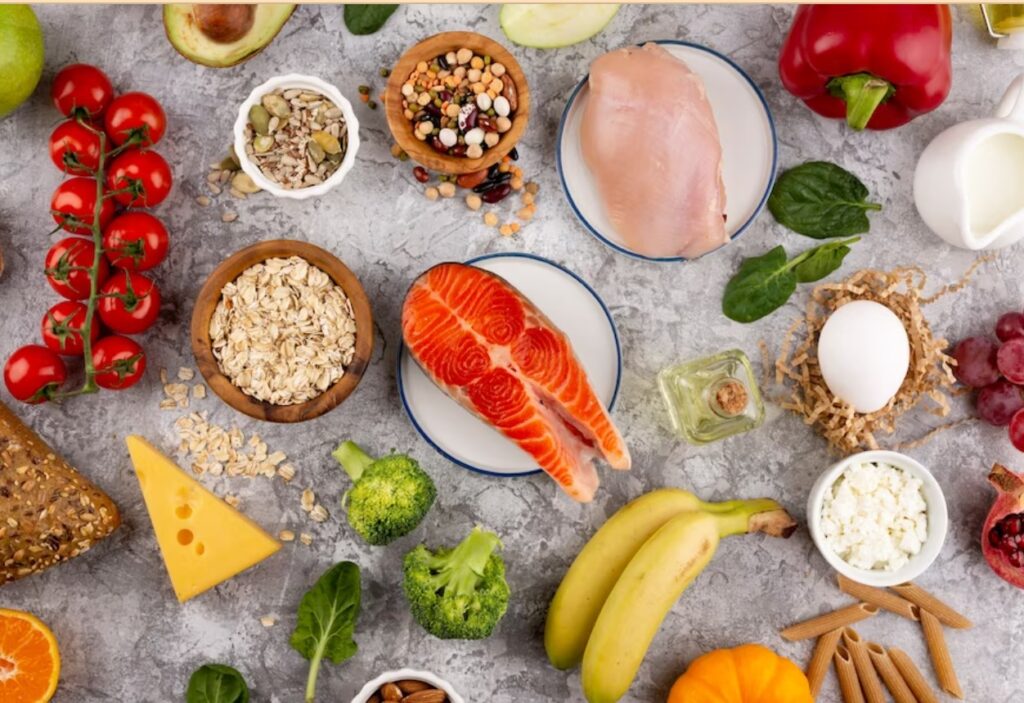The importance of healthy eating cannot be overstated. Eating a balanced diet, full of essential nutrients, vitamins, and minerals, is essential for maintaining physical and mental health. Eating a healthy diet can help prevent obesity, heart disease, diabetes, and other chronic health conditions. Furthermore, a healthy diet can help reduce the risk of developing mental health issues, such as depression and anxiety. Eating a nutritious diet can also help boost your energy levels, improve your cognitive functioning, and improve your overall quality of life.
The consequences of unhealthy eating, however, can be severe. Unhealthy diets are linked to the development of obesity, hypertension, heart disease, stroke, high cholesterol, and type 2 diabetes. Eating an unhealthy diet can also increase the risk of developing certain types of cancer, as well as mental health disorders. Furthermore, unhealthy eating habits can lead to poor physical health and poor performance in school and work.

This is why “From Junk to Health: A Guide to Healthy Eating” is so important. This guide provides an easy-to-follow plan to help people transition from an unhealthy diet to a healthy one. It provides practical advice and tips on what to eat, how to cook healthy meals, and how to find healthy alternatives to processed, unhealthy food. This guide also explores the benefits of eating a healthy diet and how to make healthy eating a lifelong habit. By following this guide, you can take control of your health and well-being and make the transition from junk food to healthy eating.
Understanding Nutrition
Macronutrients and micronutrients are essential for human health. Macronutrients are nutrients that the body needs in large amounts, such as carbohydrates, proteins, and fats. Carbohydrates provide energy and are the main source of fuel for the body. Proteins help build and repair muscle and other tissues. Fats provide energy, help to absorb some vitamins, and are important in maintaining healthy skin, hair, and nerves. Micronutrients are vitamins and minerals that the body needs in small amounts. They help to maintain the body’s metabolism, and each micronutrient has a unique role in the body.
The role of each nutrient in the body is important for overall health. Carbohydrates provide energy for the body and help to maintain a healthy weight. Proteins help to build and repair muscle, and also help to produce hormones, enzymes, and other substances. Fats help to provide energy, aid in nutrient absorption, and are important for the health of the skin, hair, and nerves. Vitamins are essential for the body to function properly, and each vitamin has a unique role. Minerals are important for the body’s metabolism and energy production, and also help to build strong bones and teeth.
The recommended daily intake of each nutrient varies depending on age, gender, and activity level. The recommended daily intake of carbohydrates is 45-65% of total calories. The recommended daily intake of proteins is 10-35% of total calories. The recommended daily intake of fats is 20-35% of total calories. The recommended daily intake of vitamins and minerals is based on individual needs. It is important to consult with a healthcare professional to ensure that your dietary needs are met.
The Benefits of Healthy Eating
Eating a healthy diet can reduce the risk of developing chronic diseases, such as heart disease, diabetes, and certain cancers. By focusing on nutrient-dense foods, such as vegetables, fruits, whole grains, and lean proteins, you can reduce the risk of these chronic diseases.
In addition to physical health benefits, healthy eating can also improve mental health. Studies have shown that diets rich in fruits and vegetables may help reduce the symptoms of depression and anxiety. Eating healthy can also help improve cognitive function, focus, mood, and overall mental wellbeing.
Healthy eating can also provide an energy boost. Instead of reaching for sugary snacks or sodas, which can lead to a crash later on, opt for nutrient-dense foods that will give you sustained energy throughout the day. This includes foods such as whole grains, fruits, vegetables, and lean proteins.
Improved digestion is another benefit of healthy eating. Eating a balanced diet with plenty of fiber, lean proteins, and healthy fats can help reduce bloating, gas, and other digestive issues. Eating a variety of nutrient-dense foods can also help keep your gut microbiome healthy and balanced.
Eating a healthy diet can help strengthen the immune system. Foods that are rich in vitamins and minerals, such as fruits, vegetables, and lean proteins, can help fuel the immune system and ward off illnesses. Eating a balanced diet can also help reduce inflammation, which can help prevent illnesses.

Tips for Healthy Eating
Planning Meals in Advance:
Planning meals in advance can be a great way to ensure that you and your family are eating healthy. Taking the time to plan out meals ahead of time can save time and money in the long run. You can plan menus for the week and create a grocery list to make sure that you have all of the ingredients for these meals. Having a plan also makes it easier to avoid unhealthy snacks or meals.
Making Healthier Food Choices:
Making healthier food choices can be a challenging but important part of healthy eating. When making food choices, aim to select a variety of foods from all of the food groups. Choose whole grains, lean proteins, vegetables, fruits, and low-fat dairy products. Be mindful of added sugars, sodium, and unhealthy fats. It’s also important to pay attention to portion sizes.
Reading Food Labels:
Reading food labels can be a great way to make sure that you are making healthy food choices. Food labels provide important information about the nutrition content of food. Pay attention to serving sizes, calories, fat, sodium, and added sugars. Compare products to find the healthiest options.
Portion Control:
Portion control is a great way to maintain a healthy diet. Eating too much of any food can lead to weight gain and other health issues. It’s important to pay attention to how much you are eating. Pay attention to serving sizes and try to stick to them. Eating smaller meals and snacks throughout the day can also help with portion control.
Foods to Avoid
Processed foods are pre-packaged, shelf-stable items that are often high in calories, fat, sugar, and salt. Examples include breakfast cereals, chips, candy, and frozen dinners. Eating these foods regularly can contribute to weight gain and other health problems.
Sugary drinks, such as soda, energy drinks, and sweetened tea and coffee, are full of empty calories. They can lead to weight gain, diabetes, and other health issues, so it’s best to limit or avoid them.

Fast food is another unhealthy option. It’s often high in calories, fat, and sodium, and it can be difficult to find healthy options. Eating fast food regularly can lead to weight gain and other health problems.
Fried foods are also high in calories, fat, and sodium. They can cause weight gain and increase the risk of heart disease and other health issues. Additionally, fried foods tend to be high in trans fats, which can raise cholesterol levels and increase the risk of heart disease.
Foods to Include in Your Diet
Fruits and Vegetables:
Fruits and vegetables are important components of a healthy diet, providing essential vitamins, minerals, and fibers. Eating a variety of fruits and vegetables of all different colors helps ensure you are getting an array of vitamins and minerals. Fruits and vegetables are also low in calories and typically high in fiber, making them an important part of weight management and overall health.
Whole Grains:
Whole grains are an important part of a healthy diet, providing essential vitamins, minerals, and fiber. Whole grains are packed with complex carbohydrates that provide long-lasting energy and help keep your blood sugar levels stable. Whole grains are also rich in fiber, which helps keep you full and can help with weight management. Eating a variety of whole grains such as oats, barley, quinoa, and brown rice helps ensure you are getting the essential vitamins and minerals your body needs.
Lean Proteins:
Lean proteins are important components of a healthy diet, providing essential vitamins, minerals, and amino acids. Eating lean proteins such as eggs, lean cuts of beef, fish, legumes, and beans helps ensure you are getting the essential proteins your body needs. Protein is essential for building and maintaining muscle mass, which helps with weight management and overall health.
Healthy Fats:
Healthy fats are an important part of a healthy diet, providing essential vitamins, minerals, and fatty acids. Eating healthy fats such as nuts, seeds, avocados, and olive oil helps ensure you are getting the essential fats your body needs. Healthy fats are important for absorbing certain vitamins, providing energy, and helping to keep your cells healthy. Eating a variety of healthy fats helps ensure you are getting all the essential vitamins, minerals, and fatty acids your body needs.
Meal Ideas for Healthy Eating
Breakfast Ideas:
A healthy breakfast is a great way to kick off the day and get your body the nourishment it needs. Some nutritious breakfast ideas include oatmeal with fresh fruit and nuts, yogurt with granola, a smoothie with a variety of berries, avocado toast with a poached egg, and whole grain toast with nut butter.
Lunch Ideas:
Making lunch a healthy affair is easier than ever! Some nutritious lunch ideas include a salad with grilled chicken, hummus and veggie wraps, quinoa bowls with roasted vegetables, black bean tacos, and soup with a side of whole grain bread.
Dinner Ideas:
Dinner is a great opportunity to get creative and make something healthy and delicious. Some healthy dinner ideas include salmon with roasted vegetables, grilled chicken with a side of quinoa, stir-fry with vegetables and tofu, vegetable lasagna, and roasted turkey with mashed sweet potatoes.
Snack Ideas:
Snacks are an important part of a healthy diet, so it’s important to choose snacks that are both satisfying and nutritious. Some healthy snack ideas include apples and almond butter, hummus and veggie sticks, yogurt and granola, trail mix with nuts and dried fruit, and smoothies with a variety of berries.
Eating Out Healthily
Choosing healthy options at restaurants:
Eating out healthily can be a challenge, but it doesn’t have to be. Start by looking at the menu and choosing dishes with fresh ingredients. Optional for grilled, steamed, or boiled proteins, like fish and chicken, and select items that are cooked without added fat, like vegetable stir-fries. If the restaurant serves salads, pile on the veggies and top it with a light dressing. Stay away from dishes that are fried, creamy, or covered in cheese. Desserts can also be full of hidden calories, so it’s best to skip them and opt for a cup of coffee or tea instead.
Making healthier fast food choices:
Fast food can be convenient, but it can also be unhealthy. Choose burgers and sandwiches that are made with lean meats and whole-grain buns. Add vegetables or extra lettuce and tomato for extra crunch and nutrition. Try to stay away from the fried items, like French fries and mozzarella sticks, and opt for healthier sides, like a side salad. Choose plain milkshakes instead of the specialty ones, and pick water or a diet soda over regular soda.
Avoiding hidden calories:
Many restaurant meals and fast food items can be loaded with hidden calories. Sauces, gravies, and dressings are often full of sugar and fat, so ask for them to be served on the side. Avoid meal combos that come with fries or other high-calorie sides. Skip the cheese, bacon, and mayonnaise, which can add a lot of calories to meals. If you’re ordering a salad, ask for the dressing on the side and use it sparingly. Finally, portion control is key when trying to eat out healthily. Share meals or take half of your meal home for the next day.
Overcoming Challenges
Staying Motivated:
Overcoming challenges can seem daunting, but the key to success is staying motivated. It is important to set tangible goals and create a plan to achieve them. Keeping a positive mindset and focusing on the end result will help you stay motivated along the way. Additionally, rewarding yourself for reaching milestones and taking time to celebrate your successes can help keep you motivated and on track. Lastly, surrounding yourself with positive people and engaging in activities that bring you joy and energy can help you stay motivated and inspired.

Dealing with Social Pressure:
It can be difficult to stay on track with overcoming challenges when faced with social pressures. It is important to remember that you must make decisions that are best for your wellbeing and that it is okay to say no to activities or invitations that could potentially lead to setbacks. Additionally, it is important to maintain a strong support system of people who understand your goals and can provide encouragement and accountability when needed. Furthermore, it is also beneficial to practice self-care and nurture your mental and physical health.
Managing Cravings:
One of the most difficult parts of overcoming challenges can be managing cravings. It is important to identify any triggers that could lead to cravings, such as boredom or stress, and develop coping strategies to manage them. Additionally, it is beneficial to find healthy alternatives to satisfy cravings and distract yourself from them. Furthermore, it is important to be mindful and practice self-compassion during moments of temptation, as this will help you maintain focus and stay on track.
Conclusion
Healthy eating is essential for a long and healthy life. Eating junk food can have a detrimental effect on our physical and mental wellbeing. Eating healthy not only helps you feel better, but it also helps to maintain a healthy weight, and can even reduce the risk of developing certain illnesses. Eating a balanced diet consisting of whole grains, fruits, vegetables, lean proteins, and healthy fats can provide us with the energy and nutrients that our bodies need. Healthy eating is a lifelong journey, and it can take some time to get used to. Making small changes, such as adding more fruits and vegetables to your diet, and reducing your intake of unhealthy snacks can help to make healthy eating a part of your daily routine. We hope this guide has inspired you to make healthier choices and to learn more about nutrition. We encourage you to take the time to make healthy eating a priority and to keep striving for a healthier lifestyle.
FAQ – A Guide to healthy eating
1. How can I start eating healthy?
Answer: Start by making small changes to your diet. Make sure to include plenty of fresh fruits, vegetables, whole grains, lean proteins, and healthy fats. Also, limit processed and sugary foods.
2. What are the benefits of healthy eating?
Answer: Eating healthy provides numerous benefits, including improved energy levels, better physical and mental health, and a reduced risk of chronic diseases.
3. What foods should I avoid to eat healthy?
Answer: To eat healthy, you should avoid foods high in added sugar, sodium, and saturated fat, such as processed snacks, fried foods, and red meats.
4. What is the best way to achieve healthy eating?
Answer: The best way to achieve healthy eating is to create a balanced diet that includes plenty of fresh fruits and vegetables, lean proteins, whole grains, and healthy fats.
5. What are some healthy meal ideas?
Answer: Healthy meal ideas include whole grain pasta with a vegetable-based sauce, grilled salmon with roasted vegetables, quinoa salad with black beans and corn, and a veggie omelet.
6. What foods should be included in a healthy diet?
Answer: A healthy diet should include plenty of fresh fruits and vegetables, lean proteins, whole grains, and healthy fats such as olive oil, nuts, and seeds.
7. What are the best sources of protein in a healthy diet?
Answer: The best sources of protein in a healthy diet include lean meats, fish, eggs, beans, lentils, and tofu.
8. What are healthy snacks to eat?
Answer: Healthy snacks include fresh fruits and vegetables, unsalted nuts and seeds, yogurt, and whole grain crackers.
9. What is the best way to eat healthy on a budget?
Answer: The best way to eat healthy on a budget is to stick to whole, unprocessed foods such as fresh fruits and vegetables, lean proteins, and whole grains.
10. What should I look for on food labels when trying to eat healthy?
Answer: When trying to eat healthy, look for food labels that include minimal added sugars, sodium, and saturated fat. Also, look for foods that are high in fiber and nutrient-dense.
